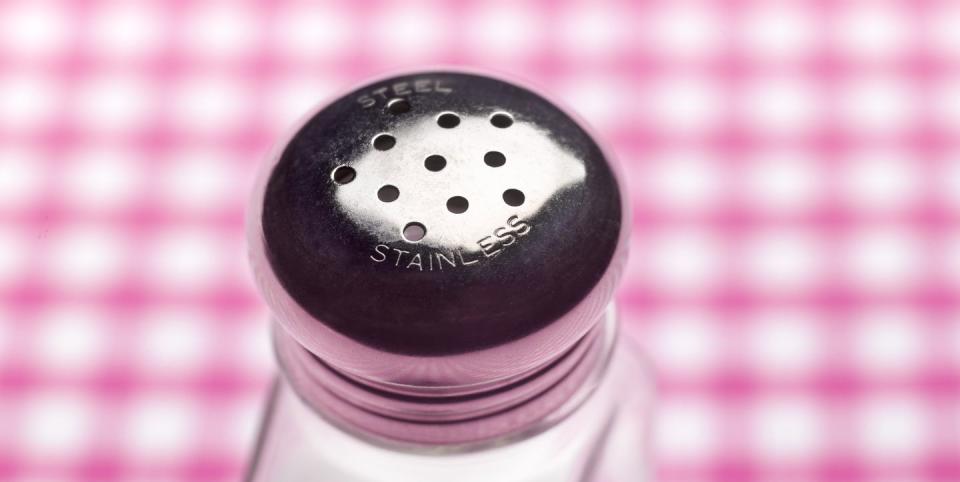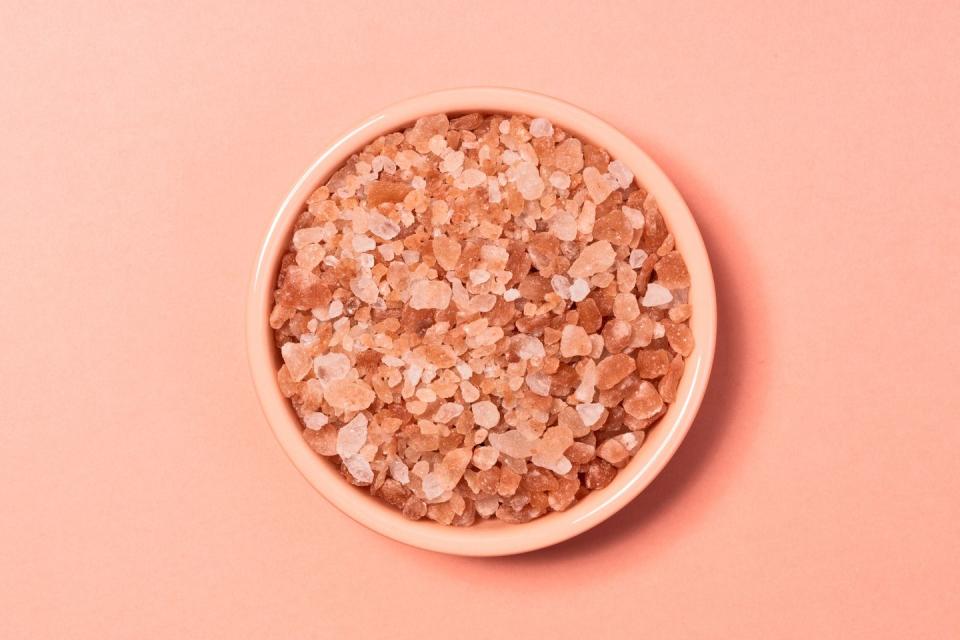8 foods you won't believe contain more salt than Big Mac

Salt is in everything we eat; it's almost unavoidable, and to a certain extent, that's totally fine. But as with most things in extreme, there can be serious effects if you indulge in too much.
While some of the saltiest foods are obvious - crisps, salty popcorn etc - some are far more unexpected. And if you eat out regularly, or favour a microwave meal (no judgement) you'll struggle to monitor your intake.
Which is why knowledge is key - and being aware of what might not be good in excess could change your eating habits and subsequently your health. Here's what you need to know about salt in foods...
What is the impact on your body if you eat too much salt?
You absolutely shouldn't be worried about eating small amounts of salt - in fact, it's necessary. "We all need some salt in our diet to help our body perform basic functions like digesting food, regulating our fluid levels and helping our nerves and muscles to work properly," Jake Williams, Lifestyle Health Advisor at Bupa Health Clinics tells Cosmopolitan.

However, it's important not to overdo it, he explains. "You need no more than 6g (or just one teaspoon) of salt daily - any more than this can negatively impact your health. There’s a strong link between eating too much salt and high blood pressure, which increases your risk of coronary heart disease or having a stroke."
What are some of the saltiest foods?
With that in mind, we looked into which of your favourite foods have the most hidden salt - but be warned, there are some surprises below! In order to consider them comparatively, it’s worth knowing that a McDonald's Big Mac has 2.3g of salt per serving, or around 38% of RDI, per average 240g burger.
Pesto
Yes, our beloved pesto may be made from relatively healthy ingredients (bar the cheese of course) but dolloping it on your pasta might not be the healthiest option, since it’s packed with salt.
A classic pesto, Sacla’s basil one, has 1.57g of salt per 47.5g serving (26% of RDI).
Stock
“Sauces and stocks can be often be on the salty side, so be mindful of how often you have them,” says Jake.
Knorr’s chicken stock pots may only be small, but each 28g stock has 1g salt when cooked (16% of RDI).
“Where you can, opt for versions that have reduced salt, or better still, make your own from scratch – for example, homemade stock is easy to freeze into batches and defrost when needed.”
Cheese
“Cheese can be surprisingly salty too, so stick to varieties like ricotta, cottage cheese and Quark; leaving cheddar, brie, feta and parmesan as a treat,” says Jake.
Halloumi is another culprit, with just 30g - or side serving - of Sainsbury’s own-brand version containing 0.8g salt - or 14% of your RDI. Excuse us while we cry.

Biscuits
“Did you know that there can be hidden salt in cakes and biscuits? Some breads and breakfast cereals can even contain salts too – again, be mindful of how much you’re having and keep an eye on those nutritional labels,” says Jake.
Even biscuits you wouldn’t necessarily think are high in salt - such as chocolate digestives - have 0.2g per single biscuit. That might not sound like much, but munch on 4 biscuits and you're also chomping through 13% of your RDI.
Sushi
Sushi might feel like a healthy option, but it’s packed full of salt thanks to the fish and soy sauce. Waitrose's Taiko Yasai Sushi (which is vegan, so no fish here) contains a massive 3.4g of salt, or 56% of your RDI. Rest assured you could probably make it slightly better on the salt front by forgoing the soy sauce.

Sausages
'Tis the season of toad in the hole and bangers and mash, but sadly you're probably looking at a high -salt meal when you need a little comfort food.
Sausages are surprisingly high in fat, and it's often the one's considered "better" that have even more. Heck's 97% pork sausages are delicious, but should be eaten in moderation thanks to the 2.2g of salt - or 36% of your RDI - found in just two sausages.
Sandwiches
Another lunchtime favourite, shop-bought sandwiches in particular are usually stuffed with salt, thanks to the bread, fillings, sauces and preservatives. For example, a classic BLT sandwich from Tesco has 2.2g of salt per pack, or 37% of your RDI. In other words, there's definitely no allowance left for a bag of crisps.

Veggie burgers
Sadly, many vegetarian and vegan products are full of salt, too. Linda McCartney’s vegetarian quarter pounders contain 1g of salt per patty, or 17% of your RDI - put two together, add a bun and sauce, and you’ll be way over what you'd find in a Big Mac.
How can we eat less salt?
So how can we actually keep an eye on our salt intake, when the ingredient is hidden in so many of our favourite foods?
"The amount of salt you’re consuming can creep up quite easily if you’re not careful, so be cautious of your intake," says Jake. "Cooking your food from scratch, rather than eating processed foods, is a great way to control how much salt you’re consuming.
"It’s worth remembering that processed foods, like ready-made sauces and soups, may already have had salt added to them during their manufacturing process – even if they don’t taste salty.
"If you choose to opt for a processed meal, take the time to understand its food label. Food packaging usually includes a traffic light system including nutritional value – try to choose healthier foods that have mainly green colours on the label."
Those who love to cook at home will know how much difference a pinch of salt can make to a recipe, and Jake says that's fine - as long as you're keeping aware.

"You may add salt to your food because you like the taste of it, or like how it enhances your food’s flavour, but try to monitor just how often you’re doing this to make sure you’re staying within your 6g daily allowance,"he recommends. "Remove the temptation to automatically add salt to your food by taking your saltshaker off the table – you may even find that your meal is tasty enough without it! You can make this work for you if you’re eating at a restaurant, too - ask if there are any low-salt dishes available and don’t be afraid to request that your meal has less seasoning.
"Additionally, you can make small changes to your lifestyle that can help you to maintain a healthy salt intake. Snacks-wise, choose fresh or dried fruit, or unsalted popcorn/nuts. Seasoning-wise, try garlic, peppers, herbs, spices or a squeeze of lemon to inject your meal with flavour without the need of salt."
One of the best ways to improve your diet and health is to be mindful, so as long as you're aware of your salt intake, you're on your way to a healthier diet.
Like this article? Sign up to our newsletter to get more articles like this delivered straight to your inbox.
You Might Also Like

